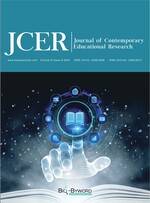Abstract
This empirical study intends to explore the questioning behaviors of an English as a second language (hereinafter referred to as ESL) teacher in Hong Kong by quantitatively looking at the distribution of the two types of questions, namely display questions and referential questions, as well as by qualitatively evaluating the universally accepted functions of the questions and the effectiveness of the modification techniques used to enhance the factual value of the questions. Data-based explorations challenging the traditional views toward questions are critically presented, and new findings are excavated and advocated. Pedagogical implications are considerably raised as they serve as a theoretical framework to be applied and further analyzed in future real-life EFL and ESL settings, so as to realize better assessment for learning.
References
Farooq M, 1993, Teaching Oral Communication in College Classes. Research Bulletin of Aichi Women’s Junior College. General Education and Interdisciplinary Research, 26: 83–92.
Brown H, 1994, Teaching by Principles, Prentice Hall, Englewood Cliffs.
Nunan D, 1991, Language Teaching Methodology, Prentice Hall International, Hertfordshire.
Pica TR, Young R, Doughty C, 1987, The Impact of Interaction on Comprehension. TESOL Quarterly, 21(4): 737–758.
Wu KY, 1993, Classroom Interaction and Teacher Questions Revisited. RELC Journal, 24(2): 49–68.
Morgan N, Saxton J, 1991, Teaching, Questioning and Learning, Routledge, London.
Chaudron C, 1988, Second Language Class: Research on Teaching and Learning, Oxford University Press, New York.
Brock CA, 1986, The Effects of Referential Questions on ESL Classroom Discourse. TESOL Quarterly, 20: 47–59.
Barnes D, 1975, Language, the Learner and the School, Hazell Watson and Viney, Aylesbury.
Gass SM, Madden CG, (eds) 1985, Input and Second Language Acquisition Theory, Newbury House Publishers, Cambridge, Massachusetts, 337–393.
Baetens BH, 1996, Reconciling Content Acquisition and Language Acquisition in Bilingual Classrooms. Journal of Multilingual and Multicultural Development, 17: 2–4.
Chua-Wong SHP, McLellan J, 1996, Proceedings of CfBT Conference on English Across the Curriculum, August 2–3, 1996: A Study of Negotiation for Meaning in Language and Content Classrooms in Brunei Darussalam, University of Waikato Research Publications Search, Waikato.
Tsui AB, 1995, Introducing Classroom Interaction, Penguin English, London.
Matra SD, 2014, Teacher Questioning in Classroom Interaction. A Journal of Culture, English Language Teaching and Literature, 14 (1): 1–128.
Ndun LN, 2015, Teacher Question in the Junior High School Classroom, thesis, Sanata Dharma University of Yogyakarta, Indonesia. https://repository.usd.ac.id/388/2/126332042_full.pdf
Sujiarti RK, Mahmud M, 2016, English Teacher’s Questioning Strategies in EFL Classroom at SMAN Bontomarannu. ELT Worldwide, 3(1): 107–121.
Zainudin A, Vianty M, Inderawati R, 2019, The Practice and Challenges of Implementing Critical Thinking Skills in EFL Teachers’ Questioning Behavior. English Review: Journal of English Education, 8(1): 51–58.
Jiang Y, 2014, Exploring Teacher Questioning as a Formative Assessment Strategy. RELC Journal, 45(3): 287–304.
Shi YF, Tong MW, Long TT, 2021, Investigating Relationships Among Blended Synchronous Learning Environments, Students’ Motivation, and Cognitive Engagement: A Mixed Methods Study. Computers and Education, 168: 104193.
Lynch T, 1996, Communication in the Classroom, Oxford University Press, New York.
Swain M, 1985, Communicative Competence: Some Roles of Comprehensible Input and Comprehensible Output in Its Development. Input and Second Language Acquisition, in Input in Second Language Acquisition, Newbury House, Rowley, MA, 235–253.
Rowe MB, 1974, Pausing Phenomena: Influence on the Quality of Instruction. Journal of Psycholinguistic Research, 3: 203–224.
Kelch K, 1985, Modified Input as an Aid to Comprehension. Studies in Second Language Acquisition, 7(1): 81–90.
Van Lier L, 1988, The Classroom and the Language Learner, Longman, London.
Krashen S, 1980, The Input Hypothesis, in Current Issues in Bilingual Education, Georgetown University Press, Washington, DC, 144–158.
Long MH, Porter PA, 1985, Group Work, Interlanguage Talk and Second Language Acquisition. TESOL Quarterly, 19(2): 207–228.
Seedhouse P, 1996, Classroom Interaction: Possibilities and Impossibilities. ELT Journal, 50(1): 17–24.
Jiang Y, 2020, Teacher Classroom Questioning Practice and Assessment Literacy: Case Studies of Four English Language Teachers in Chinese Universities. Frontiers in Education, 5(23): 1–17.
Leong WS, Ismail H, Costa JS, et al., 2018, Assessment for Learning Research in East Asian Countries. Studies in Educational Evaluation, 59: 270–277.
